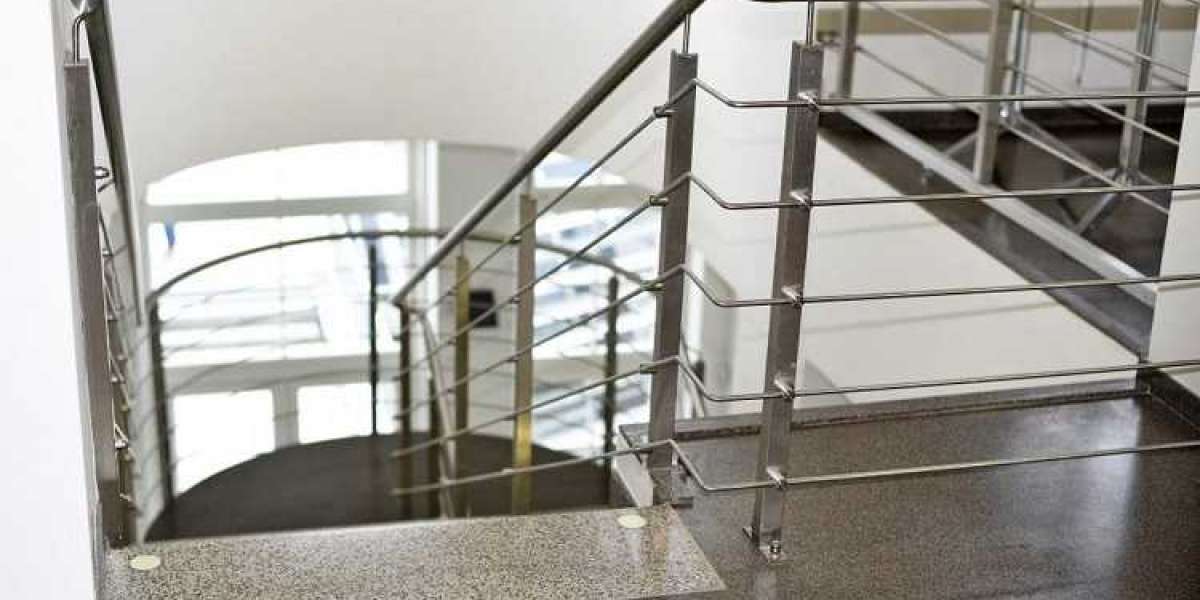When we think about staircases, often the first thing that comes to mind is their functionality a construction designed to connect different levels in a building. But there’s more to staircases than just their practical purpose. The railings along these stairs play a pivotal role not only in ensuring safety but also in contributing to the overall aesthetics of the space. In this regard, stainless steel railings have become a prominent choice for residential and commercial properties. The use of stainless steel, particularly in balustrades and fabrication, has surged, given the numerous benefits it offers. Stainless steel railings for stairs are not just a matter of structural integrity; they are also a design statement, adding value to the property and enhancing its appeal.
The Robustness of Stainless Steel Railings
Staircases are high-traffic areas, and their railings must withstand constant use and force. This is where stainless steel steps in with its superior strength. The durability of stainless steel railings ensures that they can handle the wear and tear of everyday use without compromising on safety or losing their shine. They are resilient against impacts and can support substantial weight, which makes them an integral part of staircase safety.
Aesthetic Appeal and Versatility
While the durability of stainless steel is a significant benefit, its versatility in design is equally important. The sleek, modern look of stainless steel railings can complement various interior designs, from minimalist to ornate. The inherent beauty of stainless steel balustrade or railing is its ability to blend with other materials, such as glass or wood, thereby enhancing the overall visual appeal of the staircase.
Minimal Maintenance, Maximum Hygiene
Another compelling reason to choose stainless steel railings for stairs is the low maintenance they require. Unlike other materials needing regular painting or treatment, stainless steel maintains its appearance with minimal effort. Additionally, stainless steel doesn’t harbour bacteria or germs easily, making it a hygienic option for places with high foot traffic.
Sustainability and Eco-Friendliness
In a world increasingly aware of environmental concerns, stainless steel railings are a sustainable option. Being recyclable, stainless steel can be reused without losing its qualities, which reduces the demand for new resources and minimizes waste. This eco-friendly aspect is becoming a deciding factor for many when selecting materials for construction and renovation projects.
Customization in Stainless Steel Fabrication
Stainless steel fabrication processes allow for high customization. Whether you need intricate patterns or specific designs to match the architectural style of your building, stainless steel can be moulded and shaped to meet diverse design requirements. This flexibility makes it an excellent choice for custom staircases, ensuring that the final result is as unique as the space it inhabits.
Final Words
Staircases are an integral part of any building, and their safety and design are crucial. Stainless steel railings serve the dual purpose of providing robust safety features and contributing to the aesthetic value of the space. When considering the installation or renovation of staircases, the elegance and efficiency of stainless steel railings cannot be overlooked. For those in pursuit of excellence, a company like Triangle Limited can seamlessly bring this vision to life with their expertise in stainless steel fabrication. They display the seamless integration of form and function, ensuring that every staircase railing is not only a safety feature but also a piece of art.
This article was originally published to medium.com. Read the original article here.








